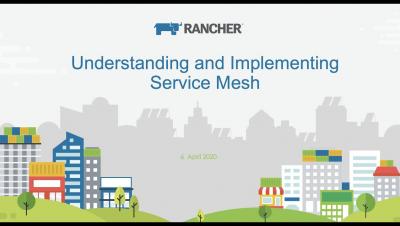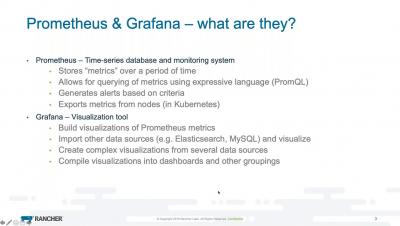Operations | Monitoring | ITSM | DevOps | Cloud
Rancher
Rancher 2.4 Keeps Your Innovation Engine Running with Zero Downtime Upgrades
Delivering rapid innovation to your users is critical in the fast-moving world of technology. Kubernetes is an amazing engine to drive that innovation in the cloud, on-premise and at the edge. All that said, Kubernetes and the entire ecosystem itself changes quickly. Keeping Kubernetes up to date for security and new functionality is critical to any deployment.
Fleet Management for Kubernetes is Here
Today I’m excited to announce Fleet, a new open source project from the team at Rancher focused on managing fleets of Kubernetes clusters. Ever since Rancher 1.0 shipped in 2016, Rancher has provided a central control plane for managing multiple clusters. As pioneers of Kubernetes multi-cluster management, we have seen firsthand how users have consistently increased the number of clusters under management.
Announcing Hosted Rancher with Rancher 2.4
We’ve heard from many of our customers and prospects that they love Rancher but just don’t have the staff and expertise to operate the platform. Figuring out the compute, storage and networking architecture can be a challenge. Performing upgrades, backups and troubleshooting can also be time consuming. Monitoring the environment and knowing when to scale up or down, horizontally or vertically, is yet another thing to worry about.
From Web Scale to Edge Scale: Rancher 2.4 Supports 2,000 Clusters on its Way to 1 Million
Rancher 2.4 is here – with new under-the-hood changes that pave the way to supporting up to 1 million clusters. That’s probably the most exciting capability in the new version. But you might ask: why would anyone want to run thousands of Kubernetes clusters – let alone tens of thousands, hundreds of thousands or more? At Rancher Labs, we believe the future of Kubernetes is multi-cluster and fully heterogeneous.
Runtime Security in Rancher with Falco
Runtime security for Rancher environments requires putting controls in place to detect unexpected behavior that could be malicious or anomalous. Even with processes in place for vulnerability scanning and implementing pod security policies and network policies in Rancher, not every risk will be addressed. You still need mechanisms to confirm these security barriers are effective and provide a last line of defense when they fail.
Kubernetes Master Class: Monitoring and Alerting with Prometheus & Grafana
Getting Started with Longhorn Distributed Block Storage and Cloud-Native Distributed SQL
Longhorn is cloud-native distributed block storage for Kubernetes that is easy to deploy and upgrade, 100 percent open source and persistent. Longhorn’s built-in incremental snapshot and backup features keep volume data safe, while its intuitive UI makes scheduling backups of persistent volumes easy to manage. Using Longhorn, you get maximum granularity and control, and can easily create a disaster recovery volume in another Kubernetes cluster and fail over to it in the event of an emergency.
Custom Alerts Using Prometheus Queries
Prometheus is an open-source system for monitoring and alerting originally developed by Soundcloud. It moved to Cloud Native Computing Federation (CNCF) in 2016 and became one of the most popular projects after Kubernetes. It can monitor everything from an entire Linux server to a stand-alone web server, a database service or a single process. In Prometheus terminology, the things it monitors are called Targets. Each unit of a target is called a metric.
Enhancing Kubernetes Security with Pod Security Policies, Part 2
In Part 1 of this series, we demonstrated how to enable PSPs in Rancher, using restricted PSP policy as default. We also showed how this prevented a privileged pod from being admitted to the cluster. Enforcement capabilities of a Pod Security Policy We intentionally omitted particular details about role-based access control (RBAC) and how to link pods with specific PSPs. Let’s move on and dig in more on PSPs.











